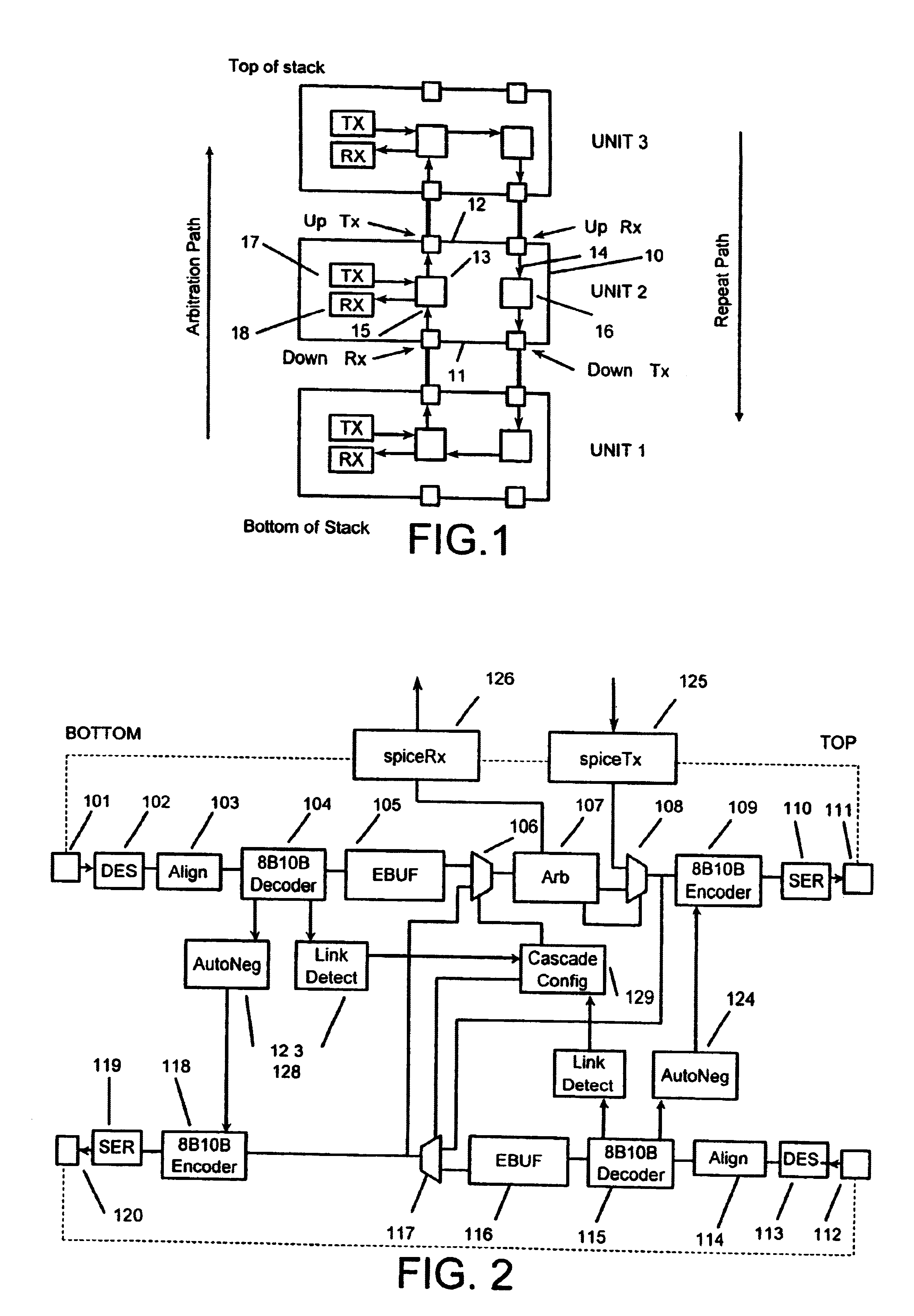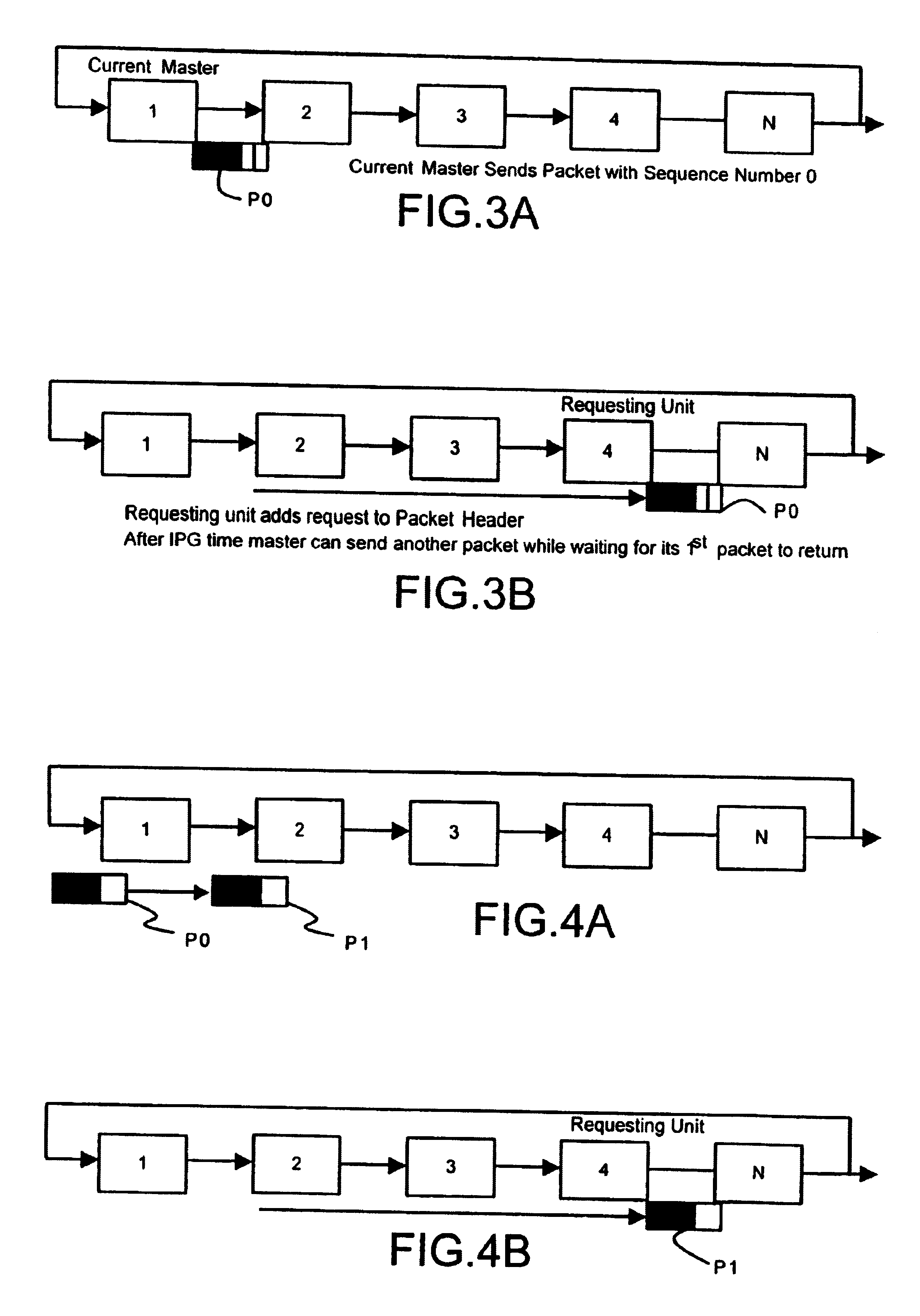Stackable ring network including burst transmission of data packet
a ring network and data packet technology, applied in data switching networks, frequency-division multiplexes, instruments, etc., can solve the problems of wasting system bandwidth, nothing useful is transmitted, and it is not yet possible to make a decision on which unit should be the next master
- Summary
- Abstract
- Description
- Claims
- Application Information
AI Technical Summary
Benefits of technology
Problems solved by technology
Method used
Image
Examples
Embodiment Construction
FIG. 1 illustrates schematically three stacked hub units, designated `unit 1`, `unit 2`, and `unit 3`, connected together to form a rinse for the circulation of packets that may be put on the ring by any one of the units. It will be understood that only one unit at any time may in normal operation place packets on the ring. The mode of such a unit is `MASTER`, the mode of other units is `REPEAT` as indicated in FIG. 6. Each of the units is similar and for convenience only the middle unit will be described in detail. This unit is a hub unit 10 which has in addition to its ordinary ports (not shown) two duplex cascade ports, a first port 11, conveniently called `down` port, and a second port 12, conveniently called `up` port. The unit 10 includes two signal paths between these two ports. A first path, which for various reasons is preferably termed the arbitration path, proceeds from the `down` port 11 of the unit to the `up` port 12. It is convenient to subdivide the functions of the ...
PUM
 Login to View More
Login to View More Abstract
Description
Claims
Application Information
 Login to View More
Login to View More - R&D
- Intellectual Property
- Life Sciences
- Materials
- Tech Scout
- Unparalleled Data Quality
- Higher Quality Content
- 60% Fewer Hallucinations
Browse by: Latest US Patents, China's latest patents, Technical Efficacy Thesaurus, Application Domain, Technology Topic, Popular Technical Reports.
© 2025 PatSnap. All rights reserved.Legal|Privacy policy|Modern Slavery Act Transparency Statement|Sitemap|About US| Contact US: help@patsnap.com



